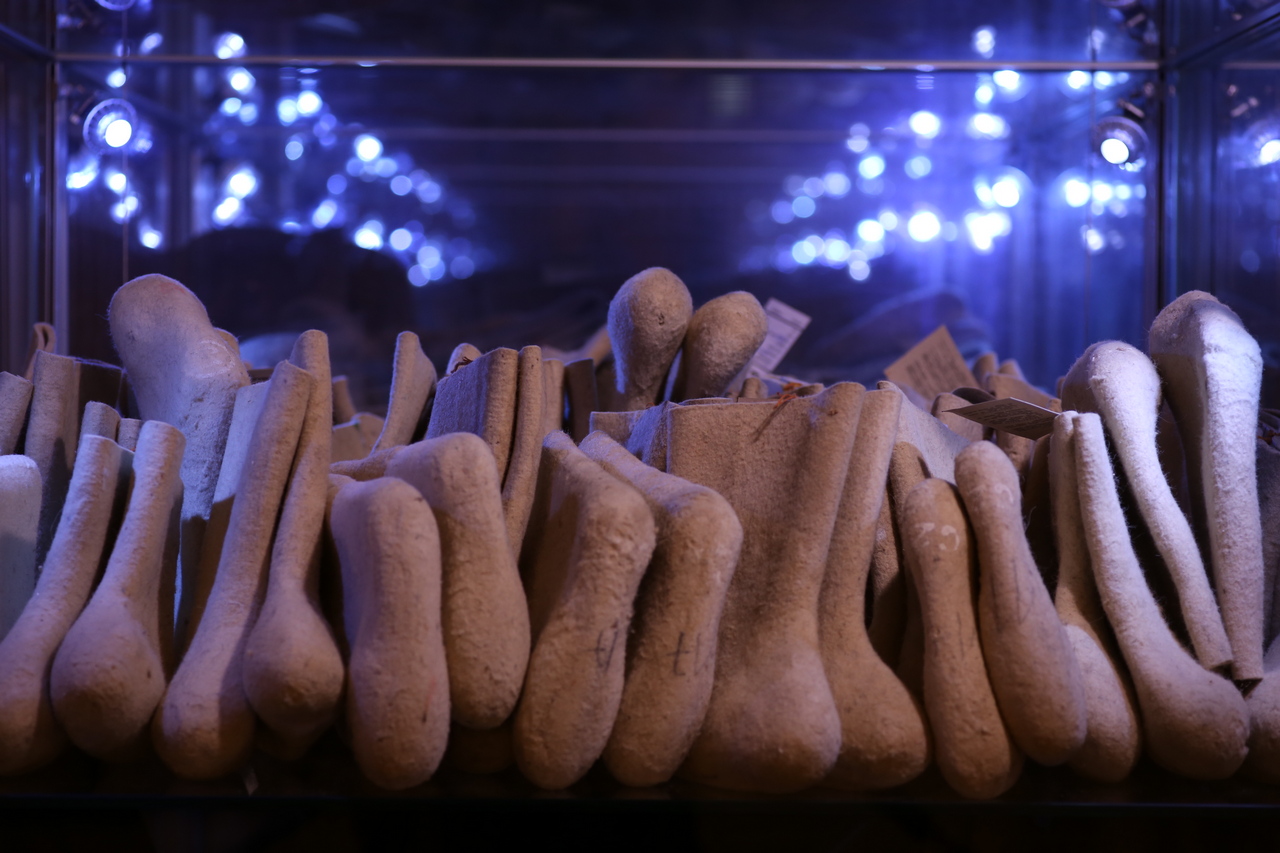The exhibition 'East in the West' by the interdisciplinary art group 'Baltos kandys' (White Moths)
20 May – 26 September 2021

The exhibition East in the West is a presentation of the works of the interdisciplinary art group Baltos kandys (White Moths) at the Museum of Applied Art and Design in Vilnius. For the first time in Lithuania, the exhibition will feature eight installations in full in which the arts of textiles, photography, video and performance intertwine.
The group Baltos kandys has been shaping the discourse of contemporary textiles with its collaborative art strategies for more than 23 years, combining installations, textile objects, video art, performance and photography. Performative textiles in the group’s activities become a pretext for promoting ecological self-awareness and questioning consumerism, as well as for deepening intercultural connections, presenting the traditional craft as relevant today and giving it a distinct shape using contemporary art practices.
The title East in the West reflects the group’s pro-eastern creative worldview, which indirectly conveys the traditions and cultures of the Eastern world through works of art. The installations subtly depict the phenomena of Eastern culture and philosophy, which are organically intertwined with the cultural manifestations of the Western world. Baltos kandys base their group’s activities and creative strategy on the example of the original community that came from distant nomadic lands, where the archaic worldview and sustainable behaviour are still alive. Therefore, from the very beginning of their creative path, the “moths” have been admiring the nature and properties of wool as a material, and using it to create various sculptural and planar artefacts. At the same time, the ritualistic behaviour that translates into the modern language of performative art captured in videos modernises the traditions. Films are either an authentic documentary of the group’s creative activity or meditation that pulls spectators into a constantly recurring action.
Each installation embodies the connections between different civilizations in a different way. In the work Mandala, this is clearly emphasised by the title and the composition, while in the kinetic installation Suktinis (Whirlabout), it is encoded in the chosen material, silk. The installation Šventė (Celebration) reflects the ideas of multiculturalism. The kinetic sculpture Šilko kelias (Silk Road) is dedicated to the issues of sustainable economy and the use of secondary raw materials. Questioning consumerism and excessive consumption, for the creation of this piece, unwanted silk was collected through a local community in China and silk fabrics that were discarded or sold for pennies in second-hand shops were acquired and torn into strips, which were then rolled into their natural silk cocoon shape. The work Spartakas (Spartacus) associatively takes us back to the Soviet times, when shoes, hats and other nonwoven products of various colours and sizes were felt at the Spartakas factory in Anykščiai, Lithuania, and supplied to the entire Soviet Union. Authentic felt objects from the Soviet era are museum-nised in the exhibition. Still carrying original labels, the felts presented in the showcases like reborn goods are whispering their soft stories. Some viewers will be reminded of their childhood and ice fishing, while others will remember the experience of the Siberian freeze.
The relationship of the group Baltos kandys with the East is twofold. By delving deep into the archetypal laws of world creation, the artists touch on images the roots of which reach not only to the symbols and rituals embedded in our tradition, but also those that exist in many other cultures. That is why in many art pieces, our fruits and herbs fit so organically with Buddhist ornamentation (Mandala), and Lithuanian and Far Eastern dishes find themselves on a common feast table (Celebration). It is a genuine part of life consciously told by the members of the group through their pieces. As part of the initiative to promote the group’s art abroad, works by White Moths were repeatedly exhibited in China, Japan, and later in India and Nepal.
All eight installations are connected differently in the East-West visual and material art conversation. The use of wool as the dominant material reminds of Asian yurts, felt rugs (such rugs depict a forest floor in Miškan (Into the Woods) and Baltic, Scandinavian, English and Scottish wool felting and spinning traditions. Precisely this “conversation” between Eastern and Western cultures, traditions, ideas and images is at the core of the contemporary art exhibition Baltos kandys. East in the West.
Current safety regulations require the visitors to wear face masks and maintaining social distance of at least 2 m. Please follow the instructions given by the museum personnel and the signage that is placed throughout the museum floor to help encourage proper social distancing. Don’t forget to cover your mouth and nose with a tissue or your elbow before coughing or sneezing. Exhibitions and permanent exhibits can be visited without the Green Pass.
3A Arsenalo st, Vilnius, Lithuania
+370 5 212 1813;
+370 5 261 25 48; +370 5 262 80 80.
tddm@lndm.lt













